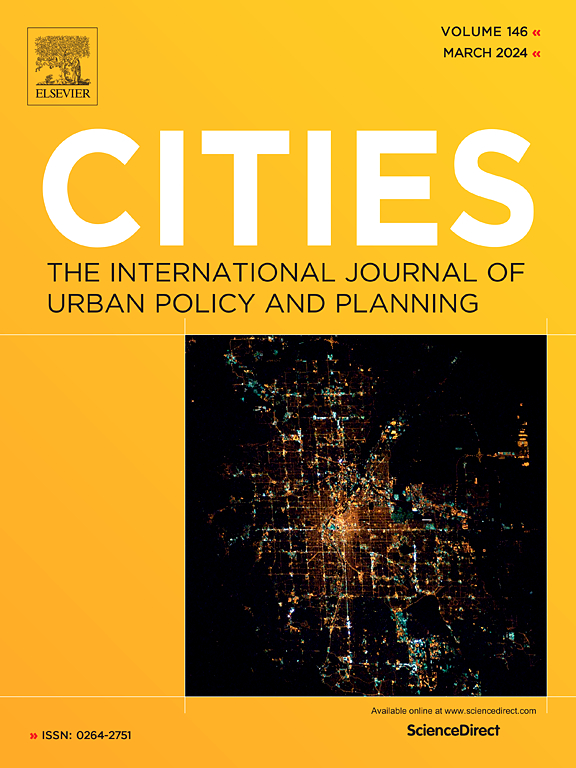基于兴趣点数据和深度学习方法绘制城中村地图
IF 6
1区 经济学
Q1 URBAN STUDIES
引用次数: 0
摘要
在城市发展过程中,城市内部的空间结构发生了巨大变化,农村地区被新的城市街区所包围,导致城中村的普遍存在。因此,快速准确地预测城中村对于城市规划、管理和可持续发展至关重要。最近,兴趣点(POI)数据挖掘已成为城市研究的热门话题。本研究旨在利用 POI 数据作为单一数据源,提出复杂城市景观模式下的城中村预测模型。首先,我们基于 Word2Vec 计算了 POI 类型的词嵌入,作为城中村的语义特征。之后,我们提出了一个 BiLSTM-Multiscale-Attention (BMA) 模型,根据 POI 词嵌入预测城中村或非城中村。在北京、天津、西安、石家庄、武汉和广州等中国几个主要城市的实验结果表明,所提出的模型达到了 84.06 % 的平均总体准确率,优于其他几种数据驱动方法。这项研究表明,POI 数据可以为城中村提供准确的空间分布信息。这些发现为在精细尺度上全面了解城中村提供了新的思路和参考。本文章由计算机程序翻译,如有差异,请以英文原文为准。
Mapping urban villages based on point-of-interest data and a deep learning approach
In the process of urban development, spatial structure within cities undergoes great changes, where the rural areas are surrounded by newly urban blocks, leading to the widespread of urban villages. Thus, quick and accurate prediction of urban villages is crucial for urban planning, management and sustainability. Recently, point-of-interest (POI) data mining has emerged as a popular topic in urban research. This study aims to propose an urban village prediction model in complex urban landscape patterns by utilizing POI data as a single data source. We firstly calculated word embeddings of POI types as the semantic features of urban villages based on Word2Vec. Afterwards, a BiLSTM-Multiscale-Attention (BMA) model is proposed to predict urban or non-urban villages based on POI word embeddings. Experimental results in several major cities of China, including Beijing, Tianjin, Xi'an, Shijiazhuang, Wuhan, and Guangzhou indicates that the proposed model achieved an average overall accuracy of 84.06 %, outperforming several other data-driven methods. This study demonstrates that POI data can provide accurate spatial distribution information for urban villages. These findings provide new ideas and references for comprehensive understanding of urban villages at a fine scale.
求助全文
通过发布文献求助,成功后即可免费获取论文全文。
去求助
来源期刊

Cities
URBAN STUDIES-
CiteScore
11.20
自引率
9.00%
发文量
517
期刊介绍:
Cities offers a comprehensive range of articles on all aspects of urban policy. It provides an international and interdisciplinary platform for the exchange of ideas and information between urban planners and policy makers from national and local government, non-government organizations, academia and consultancy. The primary aims of the journal are to analyse and assess past and present urban development and management as a reflection of effective, ineffective and non-existent planning policies; and the promotion of the implementation of appropriate urban policies in both the developed and the developing world.
 求助内容:
求助内容: 应助结果提醒方式:
应助结果提醒方式:


